According to You: GM’s 12 biggest missed opportunities
The comments quoted in this article have been edited lightly for clarity and house style. —Ed.
Asked and answered, as they say in trial law. We can’t thank you enough for participating in Hagerty’s According to You series, in which we pose questions to intrigue and possibly enlighten everyone participating. The latest query: What was General Motors’ biggest missed opportunity?
If you are only reading and not commentating, why not make this episode your first contribution? While our answers were rather comprehensive, it would be nice to know if we collectively missed something!
So without any further ado, here are twelve of General Motors’ biggest missed opportunities.
Buying and selling brands

Has GM done too much of this? Hagerty Community member @Reiner frames it well: “Its biggest mistake was selling Lotus. Its second biggest mistake was acquiring Lotus. Its third biggest mistake was selling Opel, Vauxhall, and Saab. Its fourth biggest …”
To which I must proclaim: For all that’s good and right with the world, never forget that GM spent an eye-watering two billion dollars to not buy Fiat. Two billion dollars, I tells ya!
The downsides of “Sloan Culture”

Longtime community member @hyperv6 made us put on our thinking caps. It’s hard to debate what he says.
We here want to pin the mistakes on the models but the truth at GM is the mistakes were made internally in the culture of how the company operated. The Sloan culture was good, as each division had mostly one main model and variations of that model.
As time rolled on, the divisions got more models and more variations of each model. This led to overlaps and competition between the divisions, and often mismanagement of these divisions. Then when GM rolled into the corporate-platform era, it began to lose money and make cars that really became just styling exercises and not specific models.
The divisions were always fighting each other. Chevy got the lead as it was stated they sold more cars so they got more say. Pontiac has many success over the years but nearly every one of them were due to breaking rules and lying to the corporation. The GTO broke the engine size rule. The SD-455, more broken rules. The Fiero was canceled and hidden till Pontiac could get it approved.
The now famed Trans Am hood decal was rejected by Bill Mitchell. So John Shinnella took the SD-455 Trans Am prototype and painted it black with gold stripes, just as Bill’s favorite bike, a John Player Special-liveried Norton. He then gave the car to Bill for him to drive. The paint and decal were approved.
It is sad but reform started with Bob Lutz, and cleaning up the cultural issues at GM continues to this day. This is why there were so many mistakes, and that’s why the company went broke. While not perfect today GM is much better, and it will be OK.
1923 Copper-Cooled Chevrolet

John wishes us to never forget a vehicle from 100 years ago. That’s right, a full century has passed since the 1923 Copper-Cooled Chevrolets hit the road, and they didn’t represent Charles Kettering’s proudest moment. Luckily he overcame this mistake to make the overhead valve V-8 just two decades later.
Community member @Mike agrees and adds a fantastic backstory to the equation.
The 1922 Copper-Cooled Chevrolet was rapidly discontinued and recalled (the only GM car ever to have a 100 percent recall) due to uneven cooling caused by poor cooling-fan design—front cylinders ran cool, rear cylinders ran hot.
In 1921, a Dayton inventor showed the GM folks his air-cooled engine design (SOHC, sodium-cooled valves) that used a squirrel-cage blower and calibrated ducting that provided even cooling front to back. GM didn’t listen, as it already had Boss Kettering’s design, which just had to be the right answer. History disproved that. Had Paul’s alternative design been adopted, air cooling might have come to GM 38 years sooner …
Ho-hum Hummer

The aptly named @Hummer H3 Owner wants to remind us that the Hummer used to be an exciting off-road vehicle for people with more limited budgets and not a massive flagship with a much smaller following. (For a bit of alternate history, check out this article about a pair of ill-fated 2000s concepts that might have saved Hummer brand. —Ed.)
Dropping the Hummer idea completely and never coming back with a mid-size, off-road SUV immediately after the turnaround was a mistake. The Hummer crowd is remarkably loyal and dedicated. The H3 adventure package put some real pressure on Jeep and the V-8 Alphas were and maybe still are impressive. The H3T on the other hand was simply ahead of its time.
And our very own @hyperv6 gives fascinating insight to go with this: “Hummer never should have been a brand. It should have been part of GMC. That has been corrected today: Bob Lutz said it was one of his greatest errors.”
Killing the Metro
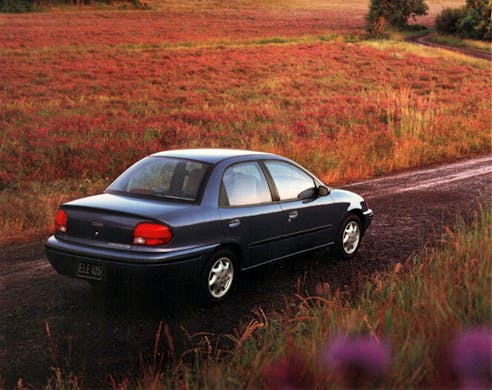
In the same vein as my foray into this question, the GM EV1, Jerry wants us to consider the “lowly, lovely Metro.” Or, as he puts it: “I bought my Metro nearly 30 years ago and got 45+ mpg. Nothing available comes close today. [Especially for its $8000-ish price tag, before discounts and incentives. — SM] What happened?”
Beholden to Holden?
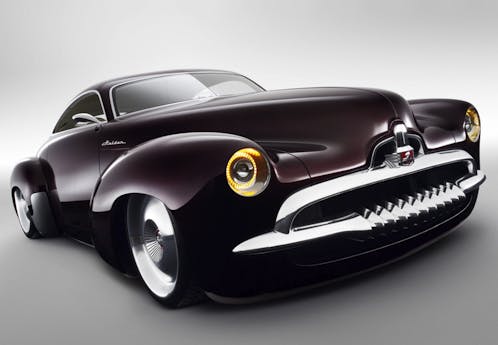
Richard has admiration for GM’s creations from the Land Down Under, and thinks Holden’s failure to launch was another one of GM’s big mistakes. Hard to argue with this!
I agree with most of the opinions here, but I really think that GM missed an opportunity by not importing the Australian line of Holdens to sell here as Holdens. GM already owned the factory, the cars were good, and I believe with proper marketing the line would have been successful, selling more cars and possibly saving the Holden brand from extinction, as well.
Even when it did bring in the Pontiac G8 and the Chevrolet SS, GM never really marketed them properly. Holden also had smaller, less expensive, civilian-quality cars as well that would have created a lot of interest.
Misguided minivans
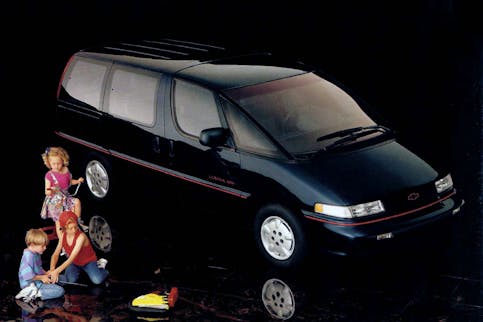
Vince says: “Let’s talk minivans. Trying to peddle the Chevy Astro van, followed by the Dustbusters from Pontiac, Olds, and Chevrolet, was a disaster. Talk about blowing it in the hottest segment in the mid-’80s throughout the ’90s.”
Hard to disagree with this, as Chrysler’s success was unanswered for so many years!
PhD-level bean-counting

Hagerty Community member @ParaboTech hits on a common theme we hear elsewhere, as the notion that overly cost conscious accountants (i.e. bean counters) are a big problem in the halls of General Motors.
With GM, it always seemed to be about the number crunchers. I can understand about 2008–9 era with bankruptcy at the door. But, if the GM powers really were into cars, they would’ve found a way to continue with Camaro way back then and also Fiero. Solstice and Sky were probably a tough sell at the time. Still would’ve been great to continue those two.
But @TG offers a good counterpoint: “I think John Z. DeLorean discovered what happens when you go the other extreme and cut the number crunchers and marketers out of the equation. They may have too much control sometimes … but they are there for a reason.”
The “not invented here” fallacy
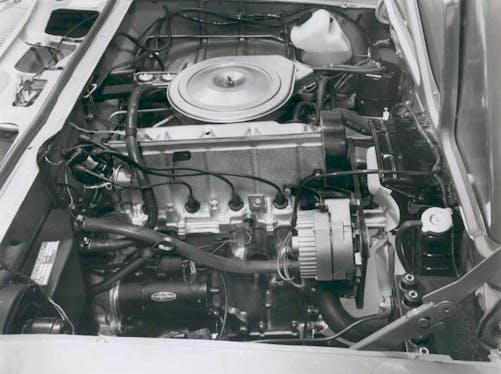
@Moparman gives this notion a twist, while offering the Chevy Vega’s 2300 engine as proof.
I’ll add the “designed by committee” problem, including the Vega being sacrificed on the altar of the bean counter. GM had a chance to make inroads against the import market, but the opportunity was squandered due to the refusal to use proven tech because of the “NIH” (not invented here) syndrome.
GM foisted dicey new tech to buyers with inadequate cooling, and no rust protection. It soured the consumer on what was actually a stylish small car that woulda, coulda, shoulda been a champion in the market.
Corvair and Fiero neglect
Does it seem logical to lump the Chevrolet Corvair and the Pontiac Fiero together? Both were significantly different than anything else available from GM in their respective time periods, so that’s perhaps why so many folks feel this way.
@Kern: I do not know if they would be considered the biggest missed opportunities or not, but I consider the second-generation Corvair and the 1988 Pontiac Fiero as innovative and leading-edge products in their time. As an automotive engineer, they are the only two GM products that I considered for my automotive collection.
@Dean: Not advancing the Corvair and Fiero. Both were so close yet so far from the promise they had. And I owned one of each.
@hyperv6 (in reply to @Dean): You have to consider the Corvair was very expensive to build versus a cheaper V-8 Camaro.
Also emissions regulations killed air-cooled engines. The Fiero was killed by the Corvette people; they feared sales being lost to a more powerful Fiero that was coming.
@Thomas: A multi Corvair owner (two Corsas and two vans), I am qualified to say that when the car-buying public sees near-new cars with oily rear ends, a certain stigma is generated. Viton pushrod tube seals were available but GM went with cheaper neoprene rings instead. Bad decision.
Also, and perhaps even more important from a legacy and lawsuit standpoint, was its decision to ignore the benefits of the supplementary transverse rear spring, which GM finally adopted and made standard for 1964 just one year before the complete rear-end redesign.
@Mike: Second-series Corvair. Exquisite design, fully independent rear suspension (not swing axle—take that, Ralph Nader!) and the worst of the oil leaks/popped fan belts of the earlier cars cured. And available with a turbo, like the first-series cars. Instead of touting all the improvements—both appearance-wise and mechanically—GM folded under Nader’s bad publicity and slunk away.
Playing it safe

Hagerty Community member @Perpetually Unimpressed thinks GM coulda taken more risks.
GM’s biggest missed opportunity has always been playing it safe. You want a company that commits to innovation? Go to Ford. Between company-wide racing bans, V-8 tech that hasn’t really changed since 1955 (new C8 flat-plane DOHC V-8 notwithstanding), timid rollout and commitment to EVs, and half-hearted development of truly interesting and innovative cars, risk is something to which GM seems chronically averse.
The big picture
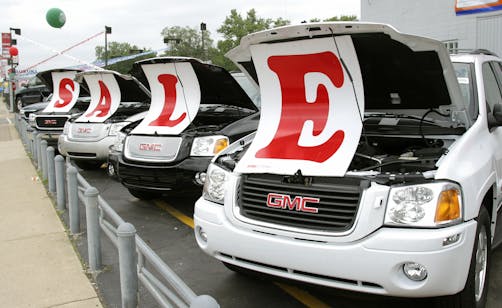
Perhaps Dale said it best, because it’s likely not one vehicle, one brand, one person, or one department of employees that inspired our initial question.
The missed opportunities happened much earlier than we realize. In the early 1960s, the connection between the “car guys” and “tech guys” promoted innovation and a product stream that dominated the market. The increasing control of the financial side of the company strangled both, often forcing key innovators out of the company or burying them, leading to ever more control by the bean counters and the eventual collapse of the company.
Divisions lost the incentive to innovate because they were marketing fronts only. Labor relations deteriorated, because when money is the only thing that matters, it’s where all the attention goes on all fronts. The more cost-focused the company became, the more innovation became buried and that led to losing more market share … and money. The diversification into Electronic Data Systems (EDS), Hughes, was a typical distraction for companies that lose their way in their primary arena.
***
Check out the Hagerty Media homepage so you don’t miss a single story, or better yet, bookmark it. To get our best stories delivered right to your inbox, subscribe to our newsletters.
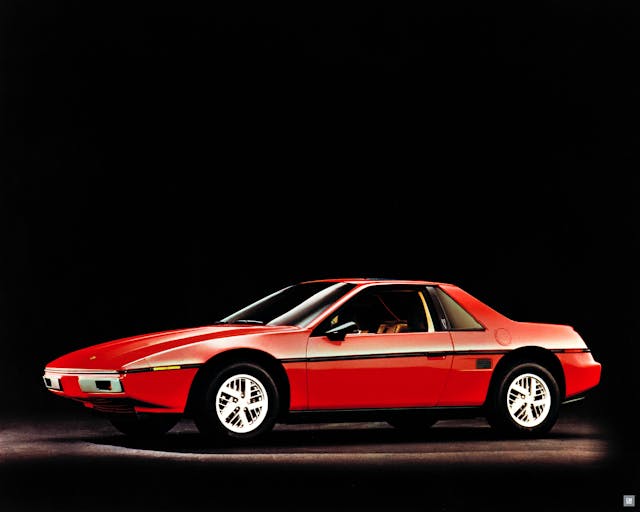

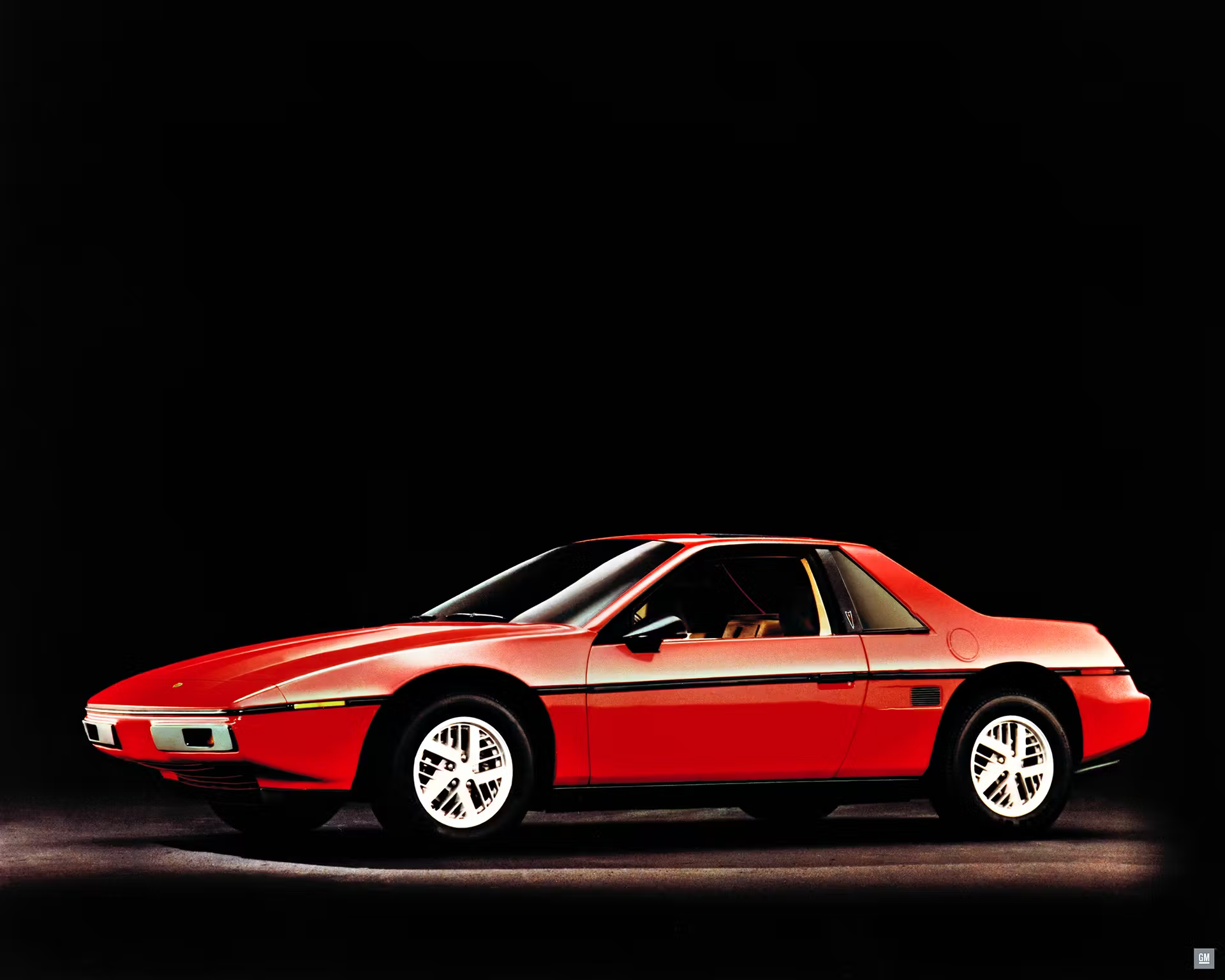


I would add that what the corporation decided to do when Bill Mitchell retired needs to go down as a major missed opportunity. Mitchell wanted his successor to be Chuck Jordan. Instead it was Howard Kerl that pushed for it to be Irv Ribycki. The corporation got what it wanted but absolutely not what it needed. Jordan would have been in the mold of Harley Earl and Bill Mitchell as a believer in the sanctity of Design and a fighter for that. Ribycki was selected since he would be the dutiful cog that was not going to fight. Leadership of industry Design was lost and it showed.
GM again made the same mistake upon Jordan’s retirement.
Go to the Executive Committee and the Board of Directors for placing this blame.
I have always said “Car companies need car guys running them.” Or at least listen to their opinions and try them. Over and over I have seen great car models go out of production because of the companies being out of touch with what people really want. Many are talked about here. All the Vega needed was refinement. I would sell now!
Too much emphasis on profit?? Uhhhh…………………whatever else you may think…………no profit……….no survive……..what world are you from?
A next generation Fiero is something I wish had happened. It seemed that it could have been great as the Fiero was starting to get good. GM should have kept Lotus, they could have done good, but then again look at what they did to Saab. Holdens were the best GM’s we were not getting for some reason.
Gary,
I remember well the mood at Entech Fiero Body Engineering on Chicago Road the Monday after the infamous Saturday meeting of the powers to be downtown-disbelief!
I remember the new prototype for the GT located in the back garage and what a great looking car it was-everything the Corvette was supposed to be!
I still have my emblem for the new Fiero GT I was given as a thank you for my work as liaison between Body Engineering and Plant 14 and 15 stamping plants.
A lot of people have said a lot of things about why the plug was pulled on Fiero. I still have the words burned into my memory of that last Monday, words heard repeatedly, “There’s only one sports car at at GM and Chevrolet has it!”
Our entire group of folks all ended up at the GM Tech Center working on Project 1800(reducing costs on the L car-Beretta/Corsica by $1,800).
Rick McNamara
I worked on what was named the stealth Fiero. It had a hydro formed chassis. We made a fiberglass floor pan and skinned it with 1990 prototype panels. It would have been a hit especially with all the mechanical upgrades. I still have my 1985 SE. As soon as the weather gets better it will be on the road again.
The culture problem started with the minting of way too many MBA degrees without knowledge and respect for the product. Financial “engineering” is now taken more seriously than product and research. Lucky that Jack Welsh didn’t run GM!
Kneecapping competition between the divisions. I understand a certain level of badge-engineering as opposed to having each division duke it out with completely separate models, but creating a culture of not competing internally seems to have led to lessened ability to compete externally.
e.g., the Corvette. I would argue not having competition for it from Pontiac (who wanted to make a competitor in the worst way) led to the C4 being just OK at the time and arguably a ponycar+ where hot models in the Camaro and Firebird model approached it closer than they should have, and the Mustang would have if it hadn’t been a bean-counters delight. And right in what should have been the Corvette’s sweet spot, the Viper stealing its thunder and Japanese rivals like the RX-7 and Supra making it look ancient and dull.
I would argue that the non-competitive mindset at least in upper management* led to declining sales, brands being killed off entirely, and the move from Japanese manufacturers from less-high end economy cars to eating GM’s lunch.
* I know this greatly pained many engineers and others
The Lotus deal was nothing special. It was only Lotus Engineering. The ZR1 was over engineered and not even built by GM or Lotus. The next small block out performed it easily.
All Lotus cars got was a Elan FWD and some bits like air bags for the other cars.
GM sold it and then used Lotus engineering for later projects and only had to pay a fee not the entire support.
Also Lotus engineering lost most of their contracts and few companies wanted to work with an engineering firm owned by a competitor.
Much of the things here are so often taken out of context as most outside people have no clue to what really was going on inside and with much miss information on the web many false narratives are created.
One really has to know all the facts and issues to really put this together.
Chrysler was just as bad internally and is why they were sold twice. Ford even right now is fighting to survive.
I can take your to a place and time where most automakers have faced issues and failure. GM has always been a big target due to their size and the media really likes to play it up and not always tell the full story.
Also to be fair GM has not always explained or told the true story themselves.
I grew up with a lead engineer from GM as a relative. He taught me much about the old GM. I learned also from the people I grew to know inside GM while doing research into parts and info on the Fiero program just where GM failed in the later years.
If you want to really learn much I do recommend to read On a Clear Day you Can see GM. Also Car Guys vs Bean Counters by Bob Lutz.
In Fact I would recommend all of Lutz books as he covers the mess at Ford, Chrysler, BMW and GM that he found. He also states his own failures to be fair. Very good reads and they teach much into the failures of all automakers.
Another book is What would Jesus Drive that covers the mess at Nissan and Ford in marketing. It was well written and shows the disfunction every place.
The rule at GM is nothing is special, and everything is lackluster. If you strip away the Corvette, and GM is stripping the Camaro (good news honestly it is horrible) you get a group of vehicles that are for soccer moms and dads who just need basic transportation. There is nothing exciting about ANY GM car today (except the Corvette). Look no further than Ford, they have the Explorer ST, the Lincoln Aviator, the Edge ST, and just a bunch of cars that have some giddiup. GM on the other hand has the bland brand down pat. Want real excitement look to Dodge and their Hellcats. GM is still just puttering along like they were 60 years ago, they don’t want performance, they just want the high volume vehicle for the masses. Want some bland? Buy a Chevy, Want some luxury? buy a Buick or Cadillac, want some Performance? Buy a Ford or Chrysler.
How smart would it have been to sell holdings here when you already had too many brands that were cannibalizing sales from each other to begin with. Why do you think Oldsmobile disappeared? And Pontiac Saturn and Saab. Don’t you get it? Holden doesn’t have anything to offer this fresh or unique. Just a mediocre styled body running on a GM drivetrain
GM’s biggest opportunity was playing at safe? While Ford was daring and innovative? Next time I’m riding around in my Ford corvair, my Ford fiero, my Ford riata, my Ford alante, my Ford solstice, my Ford sky, I’ll be thinking of you.
GM’s biggest mistake and missing a huge future market was one car. The Chevy Vega. In 1971 when small cars were starting to catch on they produced one of the worst cars ever made. They had a chance to push foreign cars back into the sea and really screwed up. The Vega initially was a good seller until owners had to check the gas and fill the oil. I just don’t get it. They had a tried and true 151 4 cylinder they had been making for years with no problems. The 140 was disaster. I remember pulling the head off and the cylinder walls were torn to pieces at 20,000 miles. The cylinder coating process didn’t work. Didn’t anybody at GM drive this car 60,000 miles?
The next big mistake was the Cadillac HT 4100. It had no power to pull around the body of a vehicle that formerly had 425 CID engine and it wiped out camshafts like no tomorrow. Cadillac outsold Lincoln 8 to 1. Within a few short years Lincoln outsold Cadillac. So that speaks for itself. Today Cadillac is all but extinct.
In order to get a low profile on the Corvair GM went with an insane fan belt routing that caused nothing but problems. The belt would periodically fall off the pullies causing overheating of an aluminum engine. Then oil would begin to leak. Once again they had a chance to go against VW and win and blew t. On this car they learned their lesson and in 1962 came out with the conventional Chevy II which was a good car.
The Oldsmobile 4 valve per cylinder W43 would have been nice in the late sixties but some GM engineers from a different division said they object!
I could write a book about this subject. Worked there for 26 years, and had great experiences in manufacturing, engineering and marketing/planning so have seen much of what is spoken here. The auto industry has always been one of boom and bust so picking on a few car/van/truck platforms is really not on the mark. What is true is only the largest survived. Even they had huge bankruptcy and bailouts except Ford. That said, Ford today is arguably a mess. The statement about the acrimony is spot on, even in the 90ties between the divisions it was huge. Egos were out of control. Ford was the worse for leadership, Henry I was a genuis until about 1926, then skip to Edsel through WW2 Give Henry II credit for resurrecting the company, only to succumb his hubris. Lee Io was the same. Yes he saved Chrysler, but never let anyone forget it. The move to EV maybe the biggest leap of faith yet….but that is a whole new book
GMAD was a huge mistake, robbing GM’s divisions of their identities. Also, beta testing on unwitting customers with the Vega’s initial engine and the Olds diesel. The “Chevymobile” fiasco wouldn’t have happened if not for GMAD and the ascension of finance over engineering and design.
The biggest one of all was the EV1. They tried so hard to bury electric that they even crushed them all and now Tesla rules the roost. After destroying electric street cars in the 50’s and becoming an ethics text book case study they still did not learn their lesson. Electric is just plain better, cleaner and more efficient than thousands of explosions every second. Karma paybacks are hard lessons.
Yes, I expected the EV1 would top the list of missed opportunities. It would have changed GM’s entire corporate image.